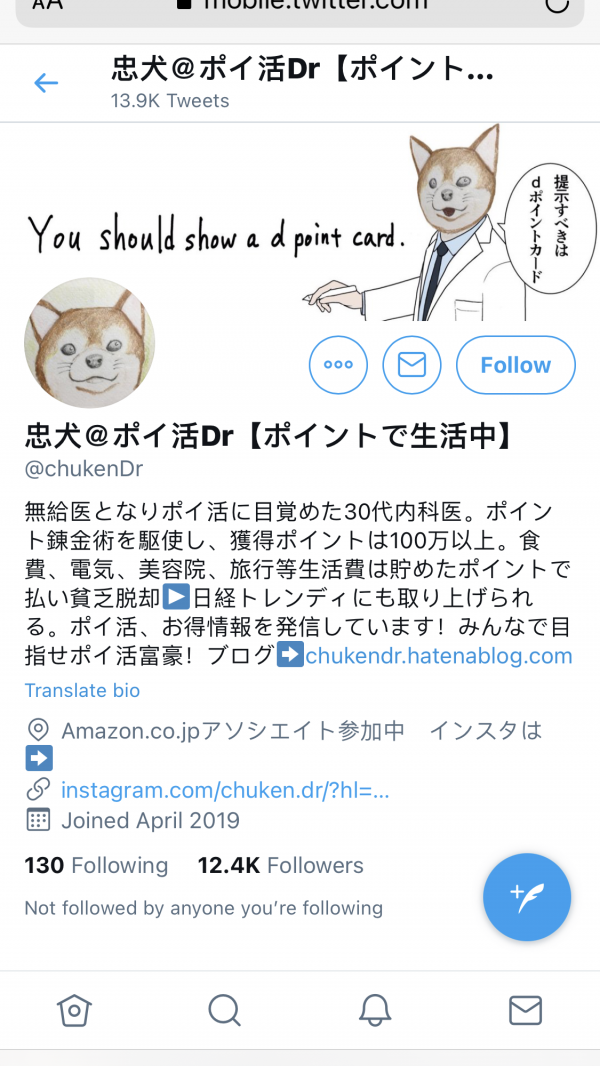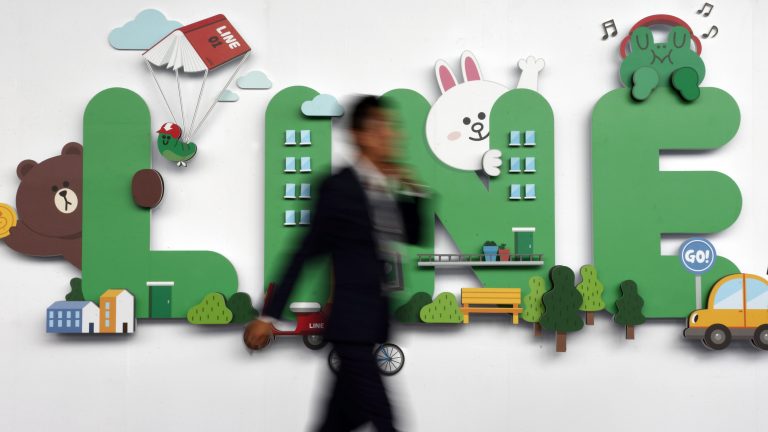Chuken, a Japanese Twitter influencer with over 12,000 followers, promises to teach his fans how to escape poverty — not by learning personal finance hacks or leaning on welfare programs, but by using loyalty points.
Chuken, which means “loyal dog,” calls himself one of Japan’s top-tier point stars, someone well-versed in the complicated art of “point alchemy.” The loyalty rewards he’s accumulated have helped him pay for everything from utility bills and vacations to the occasional trip to the salon. “I’m one of probably up to 100 people in Japan who earn more than 1 million yen [nearly $10,000] a year from points,” he told Rest of World.
Despite being the birthplace of payment technology like the QR code, Japan is still stubbornly addicted to using cash: Around 80% of people in the country say they choose it over debit cards or payment apps for small purchases. The generous rewards programs that Chuken promotes are a way for digital payment companies to encourage consumer adoption. But the incentives have also given rise to an enthusiastic poikatsu, or “point activities,” subculture that wants to max out as much as possible.
“Considering how cash-dependent Japan is, for mobile payments to take off, there needs to be a change in consumer behavior,” said Celeste Goh, a financial technology analyst at the market intelligence firm S&P Global. That’s where loyalty points enter the picture.
A doctor by day, Chuken, who asked to be identified only by his Twitter alias for privacy reasons, first became interested in rewards programs after experiencing his own financial struggles. He’s one of thousands of physicians at university hospitals in Japan who have gone regularly unpaid, even during the Covid-19 pandemic. At first, Twitter was where he swapped tips with other poikatsu enthusiasts, but the hobby soon evolved into a full-fledged lifestyle.
Chuken is just one of many poikatsu personalities that have emerged on Japanese social media in recent years. The biggest stars produce content a few times a week, and also earn additional income from sponsored posts and YouTube advertisements.
On Instagram there’s Setsuko Kikuhara, or Sekko, who describes herself as a “poikatsu-obsessed woman.” The single mother of a 5-year-old, Sekko caters her content primarily toward other parents. One of her popular hacks is teaching followers how to nab year-long passes to Hong Kong Disneyland. Her extreme point collection even landed her on a popular Japanese talk show.
One of the most successful poikatsu influencers is Ryogakucho, a YouTube creator with more than 600,000 followers who posts step-by-step guides to point hacking. He regularly preaches the gospel of R-Points, a program run by e-commerce giant Rakuten, which rewards consumers for purchases made on its platform. A cartoon lion cheers on subscribers in every video.

Two years ago, a Japanese think tank surveyed 3,000 people in the country, the vast majority of whom said they used rewards points programs at least sometimes. 37% said a major reason they did so was because it was fun. “It’s just like a math problem, game, or sport, but you’re spotting the loopholes of service providers,” said Chuken. “Poikatsu is a hobby that earns you money, rather than loses you money. The better you get, the more it benefits your life.”
The popularity of poikatsu is in part a result of Japanese consumers’ notorious resistance to cashless technology. Even as neighboring countries like South Korea and China quickly adopted digital payments, Japan has clung to physical currency, said Arnie Cho, a fintech analyst at the research firm GlobalData. In early 2020, upwards of 700 million consumers were using mobile payments in China, often relying on WeChat Pay and Alipay’s QR code systems. In Japan, that homegrown technology has rarely been used in fintech, and Chinese tourists have actually helped foster its adoption in the country.
International commentators often recycle cultural generalizations to explain Japan’s devotion to cash, but some of the real reasons for the phenomenon may be purely pragmatic. A highly developed banking infrastructure in the country keeps ATMs close, whereas many markets in Southeast Asia are turning to mobile payments to serve the unbanked, said Cho. Low petty-crime rates also allow the average consumer to feel comfortable carrying a wallet full of cash. Fintech services, meanwhile, have needed to combat problems with fraud. In 2019, over $500,000 was stolen from 7pay, 7-Eleven Japan’s debut in the mobile payment space. Almost three months after it launched, the company shuttered the program.
Rewards programs can be expensive for payment apps, but they’re also a reliable way to convince reluctant consumers to give their services a chance. The social media giant Line has relied heavily on point schemes over the past few years, after struggling to get the majority of Japan’s population who already use its messaging platform onto its digital wallet, Line Pay. “Point rewards are an easy-to-understand way to incentivize users,” said Line Pay spokesperson Mayu Kamioka.
Line introduced aggressive rewards campaigns in 2018 and 2019 for Line Pay, shortly after the Japanese government set a goal to increase digital payments to 40% of all transactions by 2027 (it later updated the target to 2025). The strategy included the Line Point Club, a tiered system that rewards users based on the number of purchases they make with Line Pay over a six-month span. The company has also used sporadic “Pay-Toku” campaigns, flash deals that give rebates of up to 20% for Line Pay purchases.
Line said the incentives are working. In a survey the company’s research arm conducted in February, around 38% of smartphone owners said they used a mobile device to make a payment in brick-and-mortar shops in the past 12 months, an increase from 13% from the year before.
Line Pay is competing with over a dozen other payment apps in Japan, including PayPay, a service jointly operated by SoftBank and Yahoo! Japan. PayPay said it doubled its registered users from 10 million to 20 million in three months last year, as it was relying on short-term cash-back programs, which cost the company around $94 million (10 billion yen) each to run. As Line and Yahoo! Japan consider a merger next spring, these competing promotions may end up benefiting both companies.

Japanese media outlets have dubbed ongoing fights between payment apps as the “Cashless Sengoku Period,” a nod to Japan’s warring feudal era dating back to the 1400s. Some influencers take it upon themselves to chart the competing campaigns, like Twitter user Haiji Hakase, who is known for his rewards chart featuring color-coded breakdowns of the 12 major payment services and what they’ll be offering over the next few days. “The best deals have changed so rapidly as poikatsu booms. It’s fun to find the best solutions amid the moving targets,” he said.
Yuzuhiko, a 31-year-old office worker in the southwestern city of Fukuoka, who asked to use only his first name, posts poikatsu vlogs on his YouTube channel three times a week. In his videos, he explains the latest digital payment trends while speaking through a 3D-animated avatar of a brown tabby cat in a samurai helmet. “I am the only ‘cashless VTuber,’” he said, referring to “virtual YouTubers” who use computer-generated avatars, a popular genre in Japan.
Yuzuhiko said he’s noticed a big bump in video views this year. In October 2019, a government rebate program began awarding 5% back on some cashless payments, in an effort to boost adoption before the since-postponed 2020 Olympics. The increased popularity may also be due to Covid-19. “Because the pandemic brought financial difficulties to some households, now they might care more about making the most of the available point services,” Yuzuhiko said.
It’s not clear how long the boon in poikatsu content will last. The incentives offered by companies like Line and PayPay are designed to lure new users and could be discontinued once the companies establish a core base of customers. “Now might be the fad season for poikatsu,” said Chuken, “but I’m not sure if this trend will still be around in four to five years.”



